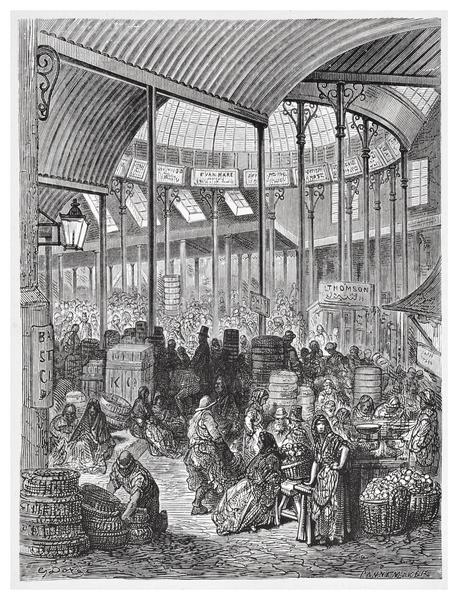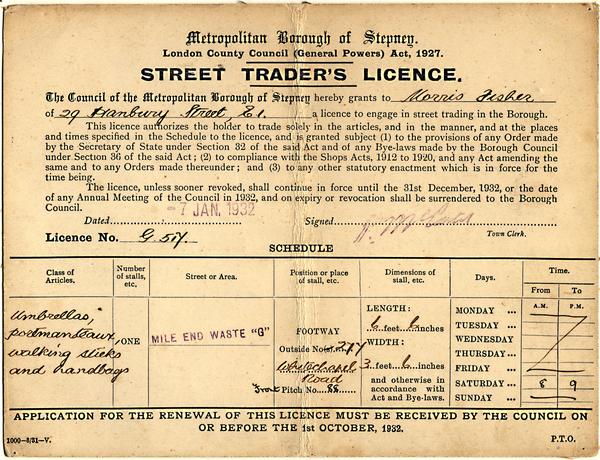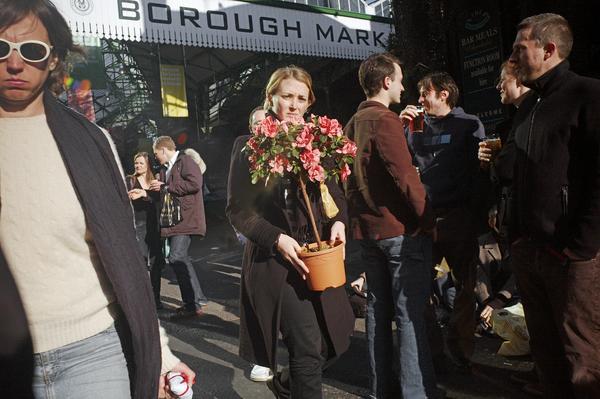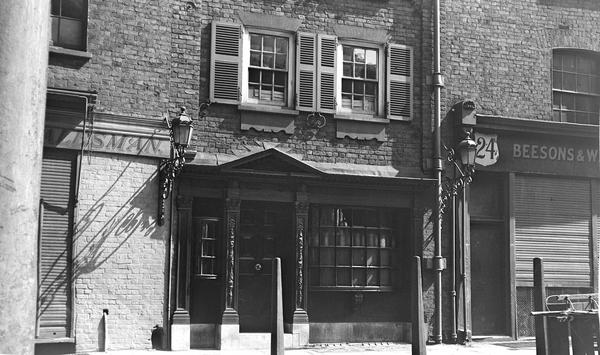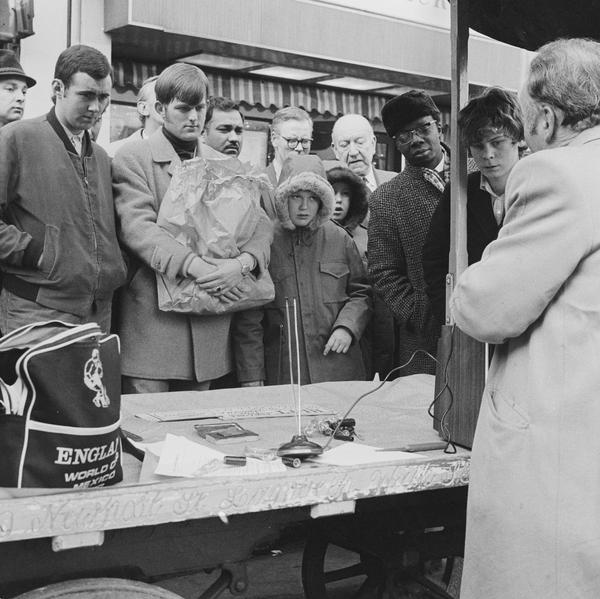Borough Market: London's oldest food-trading hub
Borough Market has a good claim to being London’s oldest surviving food market. It maintains a special place in London’s culinary culture to this day, serving restaurants and retailers while also being a foodie favourite.
Southwark
Since 1276

A delicious history
Every one of London’s boroughs might have a market. But there is only one Borough Market.
It’s existed in some form near the southern end of London Bridge for around 1,000 years, and has stood on its current site for over 250.
From the 19th-century, it primarily sold fruit and vegetables wholesale to businesses. But since the 1990s, the market’s flourished in a new way. It now serves delicious treats to hungry visitors and curious shoppers, while also supplying high-quality produce to food businesses and restaurants.
The market is open six days a week, and is still housed in its distinctive Victorian buildings. It’s one of London’s biggest tourist attractions and attracts millions of people every year, whether they’re digging into international street food or shopping for artisanal cheese.
From street chaos to organised trading
As the only crossing over the River Thames for centuries, London Bridge naturally attracted traders selling to travellers entering the city.
By 1014, records show grain, fish, vegetables and cattle being sold in Southwark, London's oldest suburb. The first formal mention of a fruit and vegetable market was in 1276, when it was moved to the High Street.
Medieval Borough Market was chaotic. Traders lined Borough High Street while butchers struggled with their cattle. By the 16th century, market congestion became so problematic that women selling produce from baskets weren't allowed to sit down and had to carry their wares without any breaks.
For centuries, Southwark had two markets
One market stood in St Thomas' Hospital grounds, specialising in corn. Another, larger market was at the foot of London Bridge, in an area known as the Guildable Manor, and sold a wider range of goods.
It was only in the 15th century that the markets merged. Around the same time, an annual three-day fair was started in the area. Southwark Fair, which took place in September, would go on to become one of the biggest and most riotous events in London’s calendar.
“for the use and benefit of the parish forever”
Act of Parliament establishing Borough Market, 1754
London's first community-owned market
As London grew in size, so did the hordes of commuters across London Bridge. The location of the market in the middle of the road didn’t help.
A bill went before Parliament in 1754 to “cease trading” of the market as it “obstructs much trade and commerce”. At around the same time, Southwark residents were petitioning to start a new market, away from the High Street.
In 1756, they achieved something remarkable. Southwark residents raised £6,000 (over £1 million today) to purchase "The Triangle" site and create their own market through an act of Parliament. The act declared that the market site would "remain an estate for the use and benefit of the parish forever."
The 1756 Borough Market Act also established a charitable trust that still manages the market today.

A typically luxurious array of fruit and veg at the modern Borough Market.
The 19th century dramatically changed Borough Market
Urban growth and London’s new railways created perfect conditions for Borough Market’s expansion. In 1851, it added market buildings designed by Henry Rose. These glass and iron structures, still there today, can be seen in Gustave Doré’s illustration from our collection.
In this period, the market became focused on the wholesale fruit and vegetable trade, supplying the greengrocers that fed millions across southeast England.
Borough Market’s distinctive character comes from the overlapping structures in the space. Alongside Victorian railway arches and Gothic market halls, there is an Art Deco entrance added in the 1930s, and parts of the Royal Opera House’s Floral Hall, which were moved from their original site to the market in 2004.
The Borough Market once held an annual sports event
It started in 1904, with a cricket match between the fruiterers and salesmen. This went on to become a more general sporting event to test strength and agility, and raise money for charity, but hit a pause with the start of the First World War in 1914.
The trustees revived the event in 1930 with a surprise backer – the actor and filmmaker Charlie Chaplin, who had grown up on the streets of Southwark. Held at Herne Hill in south London, events included a basket-carrying race, where competitors balanced 10–12 wicker baskets stacked in a tower on their head.
The start of the Second World War in 1939 put a stop to the contest.

Market porters practicing for the basket-carrying competition in 1937.
Borough Market’s retail renaissance
The wholesale fruit and vegetable market was still thriving in the 1950s. But the rise of supermarkets spoiled the party, taking the business of greengrocers who traditionally bought from the market.
Since the 1990s, Borough Market has taken a new direction. Traders focus on selling to the public – to ordinary customers, rather than businesses. Tourists, office workers or locals might swing by a stand to pick up a cheeky snack, a delicious meal, or the star ingredient for their upcoming dinner party.
At the same time, speciality food retailers have developed wholesale operations there – selling high-end and unusual products to restaurants and other businesses.
It’s now a bustling fine-food hub with a focus on sustainability, a place that reflects just how much London’s food landscape has changed in the 21st century.
But there’s also a tragic chapter to Borough Market’s recent story. In 2017, it was one of the scenes of a marauding Islamist terror attack. Eight people were killed, and many more injured.
The market has ploughed on, continuing to serve Londoners and weathering the Covid-19 lockdowns to remain one of London’s best-known food landmarks.
In literature and film
Borough Market’s fame also extends to the big screen. Its Victorian arches and bustling trader stalls are a quintessentially British backdrop that directors love. You’ll find the location for the Leaky Cauldron in Harry Potter nearby, as well as Bridget Jones’ apartment.

Renée Zellweger and Colin Firth filming Bridget Jones: The Edge of Reason near Borough Market in 2003.





